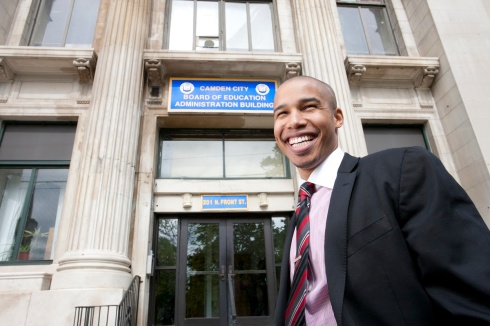
The first thing you notice about Bing Howell is his smile. The second thing is how extremely articulate he is. So it’s no surprise that at 32 years old he’s had a crazy-fast career trajectory.
This is a guy on the move. As a kid, he lived in Sacramento, Calif.; Guadalajara, Mexico; and Omaha, Neb., before moving to Rhode Island to finish high school. His parents are from Trinidad and Panama, and Bing said he grew up knowing he wanted to travel.
He came to Iowa State for two reasons: The university was good at Div. I men’s basketball and international business. (“Everything else was secondary,” he says.)
The basketball part didn’t quite pan out.
“[Coach Larry] Eustachy said I could walk on [to the team],” he explains. “I tried out, but I didn’t get past day two.”
The academic part was a lot more successful.
Bing earned a bachelor’s degree in management information systems and international business, with additional study in transportation and logistics.
Following graduation, Bing went to work for the investment banking firm Merrill Lynch in New York.
“It was engaging and exciting for the first two months when there was leadership development training and onboarding,” he said. “It was exciting and engaging for the next two months after that when my project was new. But I have a tendency to learn things really, really quickly, so after the first four months on the job it became redundant. I felt a bit lacking in purpose.
“So then my sister coached me. She said, ‘You need to be doing something you enjoy each day.’”
And then he found his passion: education.
He spent time in New York as an intern with Sponsors for Educational Opportunity, a minority internship placement program that focuses on bringing minorities to Wall Street firms, corporations, investment banks, and law firms.
“Merrill Lynch had an award-winning financial literacy program that taught kids financial principles from kindergarten through high school. I put together a financial literacy program for a couple hundred low-income middle school kids in New York. On kickoff day in the summer of 2004 we had 15 volunteers that were engaging with 200 kids over the course of a four-hour financial literacy day. The kids were all ecstatic that someone was there sharing their time, and they were ecstatic about the material – they’d just never been exposed to it. And so by the end of that four-hour window I was actually more alive professionally in something I was spending less than 10 hours per week on than the 80-90 hours I spent on my job. A couple months after that I stopped doing my job and I’ve been working in education in some capacity ever since.”
Bing moved to New Jersey to work for the state’s Department of Education. He’s worn several different hats, including human resources director for 22 of Camden’s 26 schools and manager of the Office of Portfolio Management.
“Camden is the poorest city in the country,” Bing said. “It’s the second most dangerous city in the country, and it has the absolute 22 worst-performing schools in the state. It’s not just bad – it’s abysmal. It’s a lot of concentration of bad stuff happening in the same place.”
Bing says he chose Camden “largely because there was a huge need.” In 2011 he joined the Broad Residency – a leadership development program that places participants into high-level managerial positions in school districts and departments of education.
“Camden is where I actively chose to spend most of my time while going through the residency program,” he said. “Camden had a concentration of the worst schools – that’s where the need is; that’s the best place to implement new strategies.”











